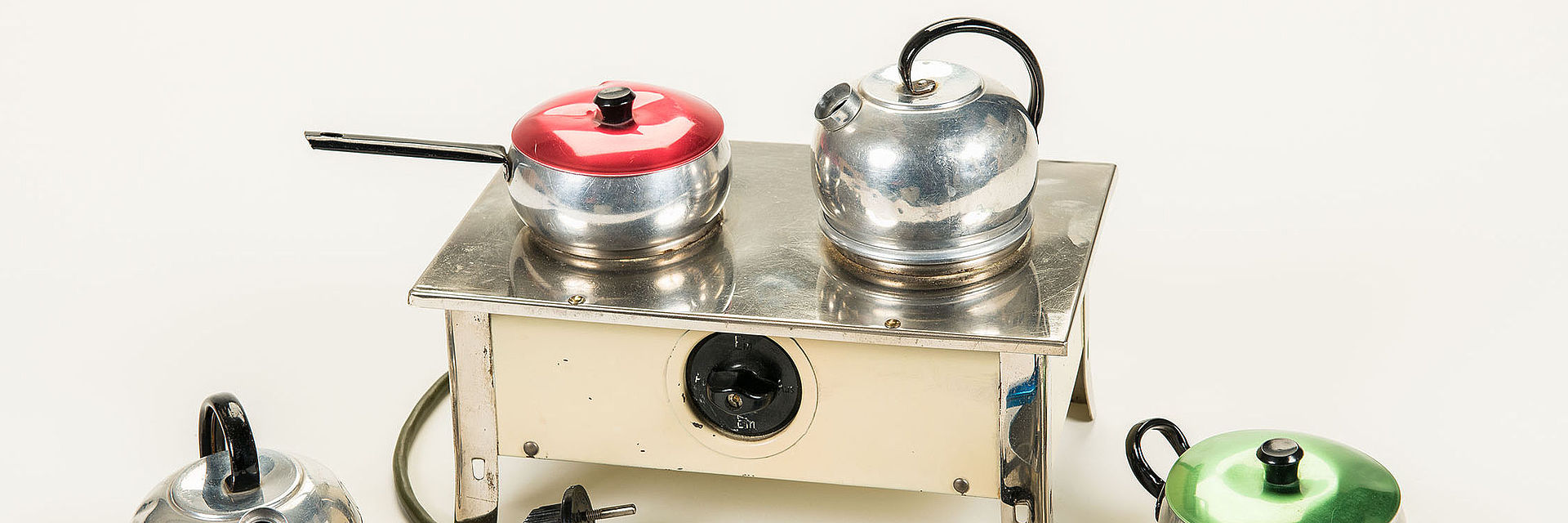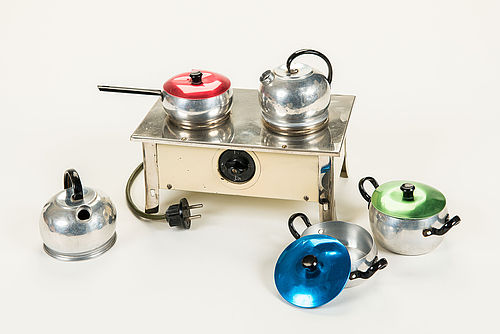
Electric toy stove, circa 1930
Object of the month December 2021

SDTB / C. Kirchner
Christmas is fast approaching. For many children, the exciting Advent season and the subsequent Christmas celebrations are very special affairs, not least because gifts play a major role in the festivities. This toy stove was just such a Christmas present.
Replicas of everyday stoves became very popular during the second half of the 19th century. The miniature stoves were mostly given as gifts to wealthy middle class children. Initially fired by alcohol, fuel tablets, candles or gas, an electric version of the toy stove was eventually introduced at the beginning of the 20th century. Although much more expensive, it was also much safer to use.
The history of the dollhouse kitchen dates back to the 18th century. Size, shape, material and accessories changed in keeping with contemporaneous developments over time. At first, they were considered an item of prestige for adults and were used to entertain the children. Against a backdrop of economic and social upheaval, family structures changed and toys were increasingly seen as educational tools.
It was possible to cook on the small stoves. Playfully emulating one´s mother or the family cook was a way of introducing girls to their socially predetermined tasks as housewives and mothers - a stereotypical role that women have repeatedly questioned and continue to question today.
The toy stove displayed here with its simple, bright design and straight legs was typical for the period from the 1920s onwards. Before then, whimsical and decorative shapes were predominant.
